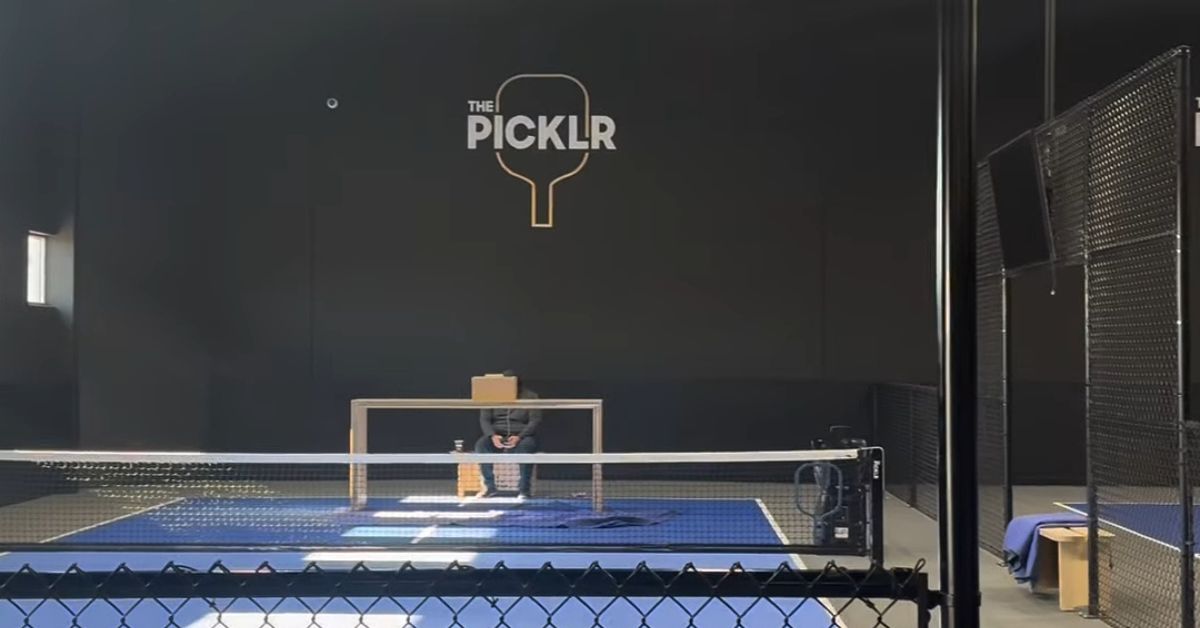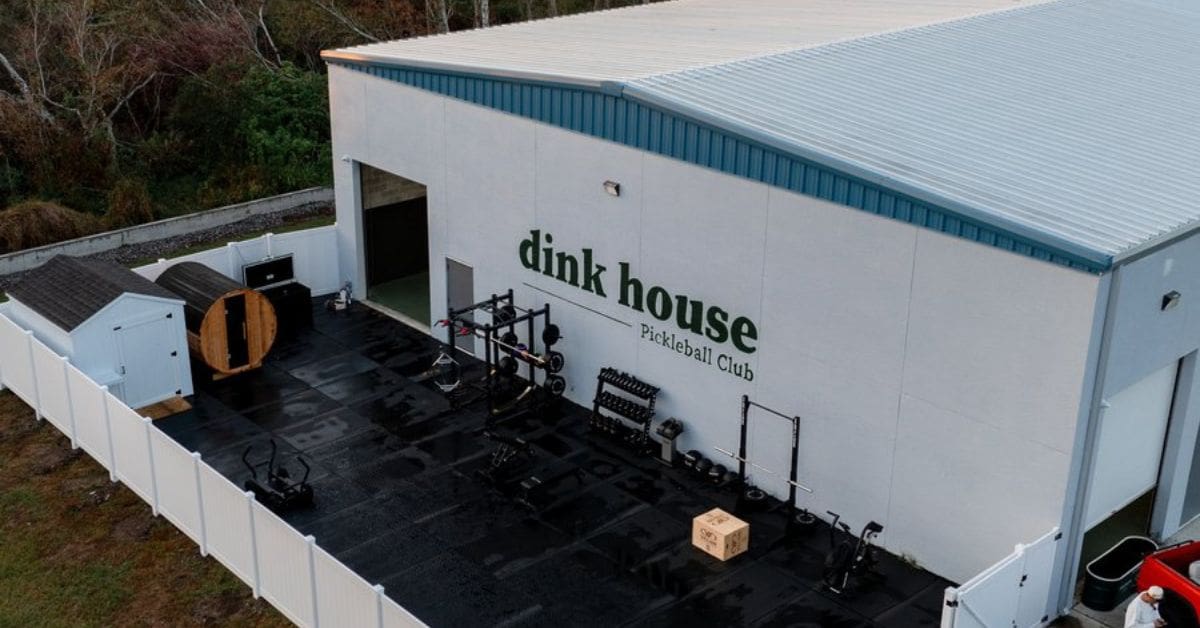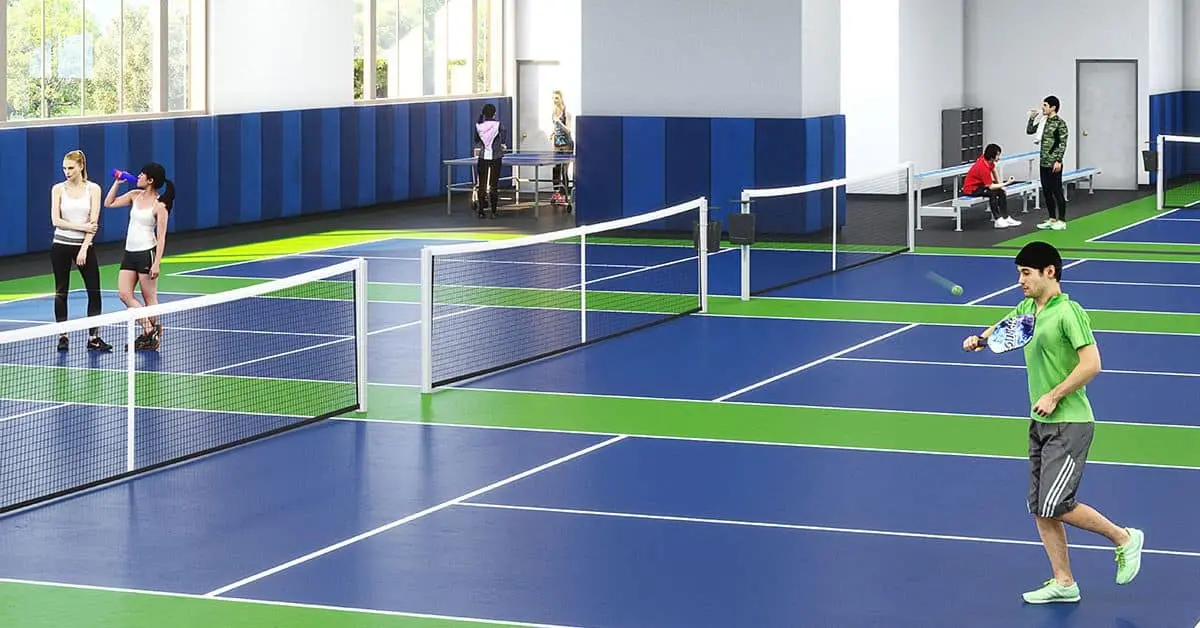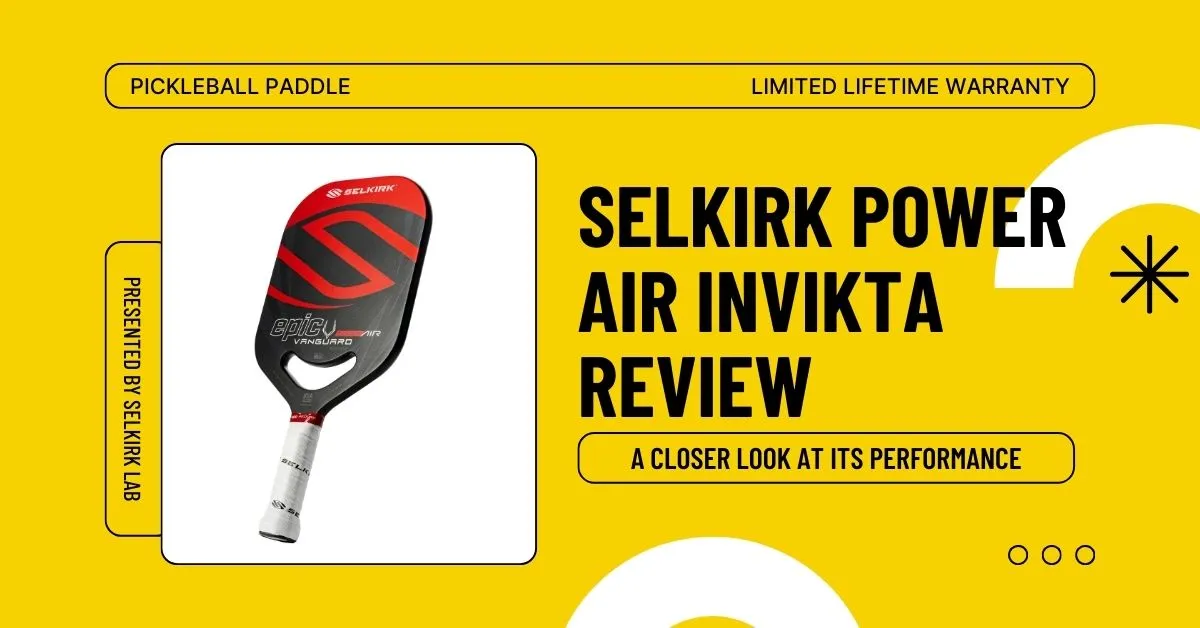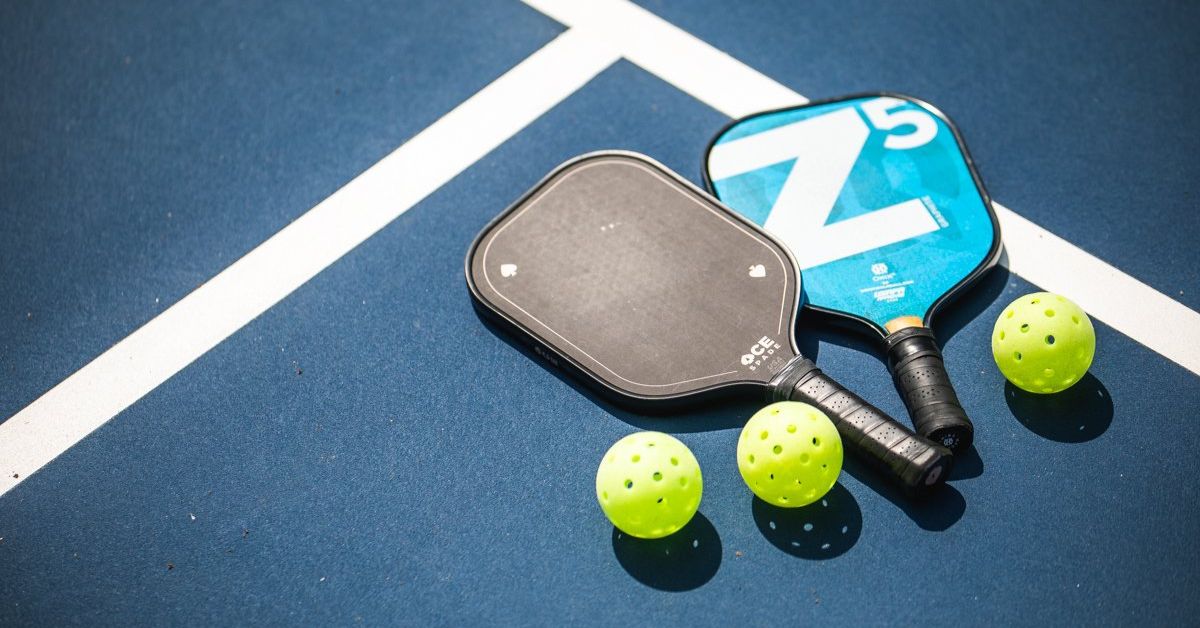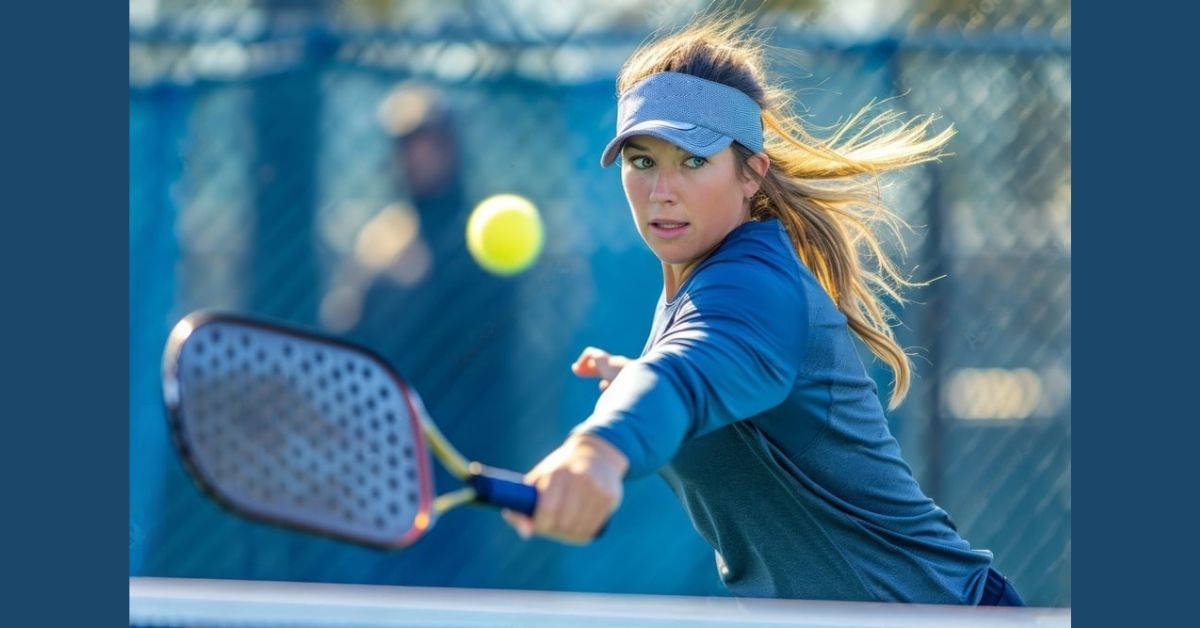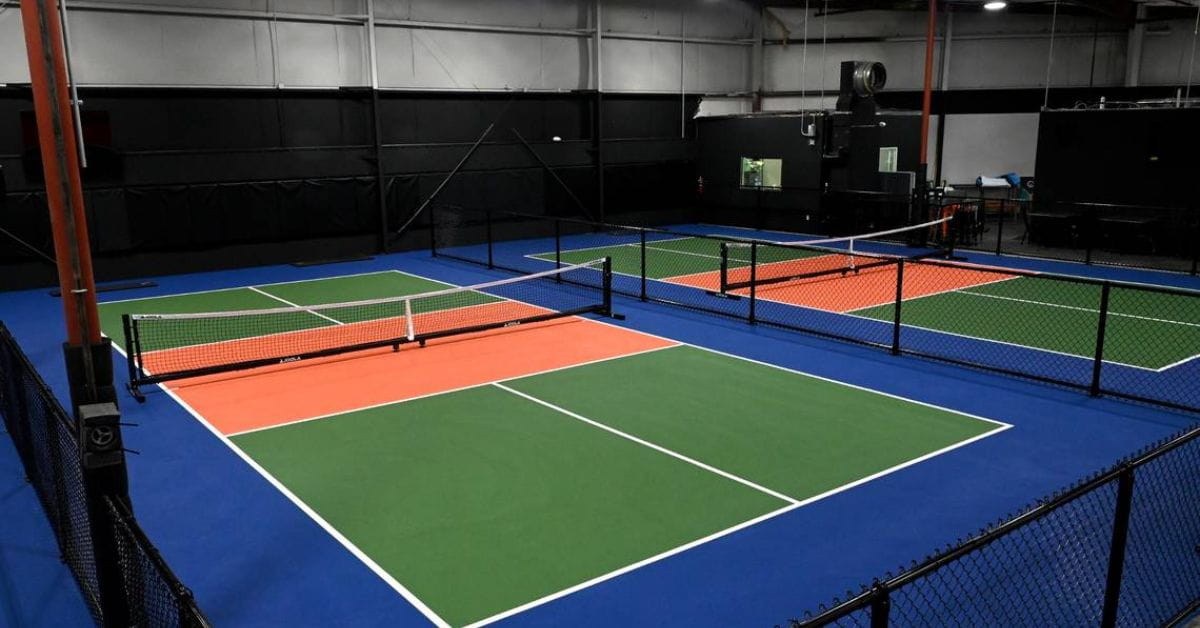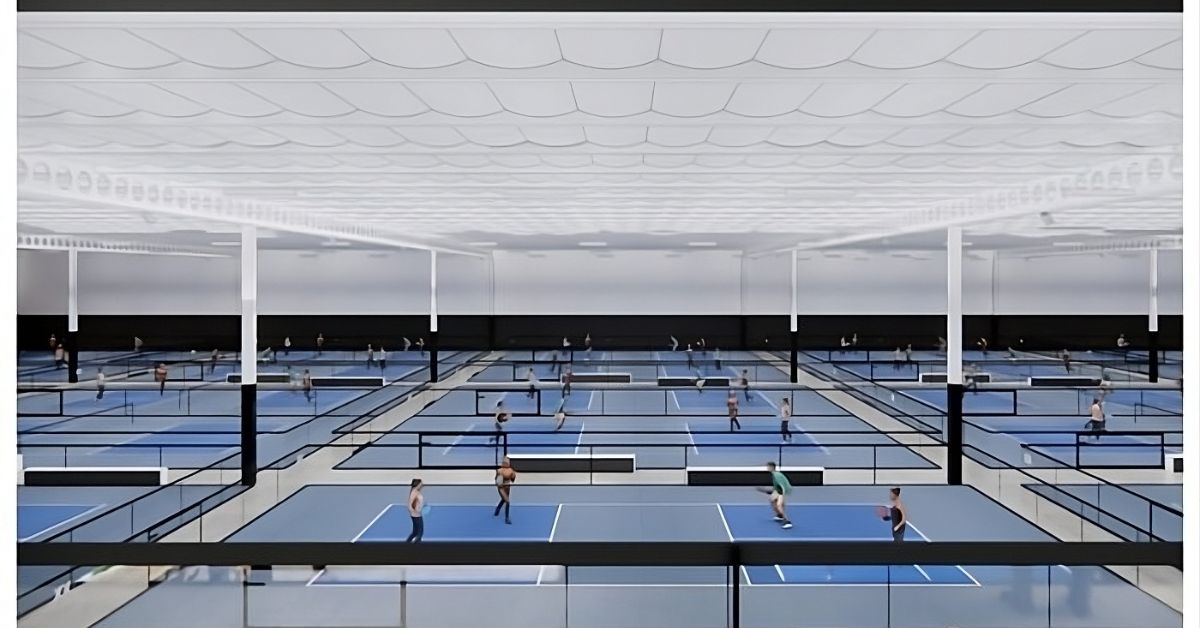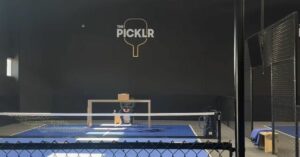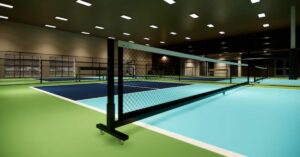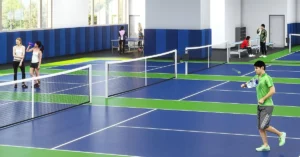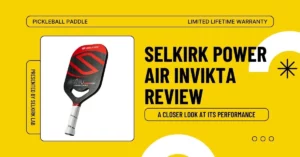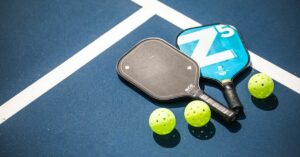In recent years, pickleball paddle sales have soared as the game witnesses exponential growth, presenting players with a range of options in the market.
With countless alternatives, selecting the perfect paddle can feel like navigating a maze, which is where we come to help.
Following is a comprehensive guide on paddle selection, decoding the essential factors that can make or break your game.
Control, power, and spin are more than just buzzwords in pickleball. They are metrics attached to shots. You must have heard of “power shots” or “spin shots” if you visit a court regularly.
These qualities of a shot are pillars of any player’s playing style, and each is influenced significantly by the paddle you wield.
Through expert insights and practical advice, we’ll decode the mysteries behind choosing a paddle that complements and elevates your unique playing style.
We’ll explore the materials, designs, and nuances that define what the best pickleball paddles are made of. Whether you’re a new player or have some experience, this guide will help you choose your ideal paddle.
What Are Pickleball Paddles Made Of
When it comes to pickleball paddles, the materials they are made of play a crucial role in determining their performance characteristics.
What are pickleball paddles made of? As it happens, it’s usually more than one material. The performance of a paddle depends on more than just its surface; the material used to construct the core is equally important.

Let’s break down the significance of power, spin, and control and how different materials cater to various player styles:
Power
Power shots employ force and more energy in their execution than most shots in a rally. They primarily result in a baseline game where the opponent receives most shots near the end of the court.
Power in pickleball depends heavily on the paddle’s weight. Heavy paddles, typically weighing over 8.4 ounces, deliver authoritative strokes. Materials such as fiberglass, wood, carbon fiber, and even graphite generate significant power. Additionally, paddles featuring a Nomex core are renowned for enhancing power, providing players with the force to drive shots past their opponents.
Spin
Spin is a game-changer, allowing players to impart unpredictability and finesse to their shots. As the name suggests, spin is a revolving ball that changes its expected mid-air course, making it harder to return or predict its trajectory after the bounce. Pickleball has two types of spins: the topspin and the backspin.
Carbon fiber paddles stand out for their exceptional spin potential, enabling players to add impressive spin to their volleys and dink shots. The forgiving sweet spot and soft play of midweight carbon fiber paddles encourage ball rotation, giving players a competitive edge on the court.
Control
Control is a balance between the speed and accuracy of a shot. It is a necessary metric for advanced players who can tire out their opponents with different degrees of control.
Mid-weight paddles balance power and control, offering players the finesse needed to place shots accurately. Materials like carbon fiber provide excellent control, allowing players to maneuver the ball precisely where they intend. Polymer core paddles are also favored for their ability to enhance power, giving players confidence in their shot placement.
Now, let’s explore the categories of materials commonly used in pickleball paddle construction:
Pickleball Paddles Material
The pickleball paddles have a core from where they drive most of their features, which is coated by a surface material. Both are important to deduce which paddle should be chosen to amplify a player’s skillset.
Graphite Surface Paddles

Graphite is a lightweight form of pure carbon used in paddle construction for a thin outer surface. The resulting paddle effectively balances power, weight, and responsiveness. Despite their lightweight design, graphite paddles boast remarkable rigidity and stiffness, ensuring more significant energy transfer between the ball and the paddle.
Players who use graphite surface paddles experience improved precision and finesse in their shots and also point out their ability to absorb high-impact shots. We attribute the latter quality to graphite’s ability to redistribute high-wielded power evenly across the surface of the paddle. This gives athletes a chance to control ball placement and spin.
Graphite paddles also have a broad and forgiving sweet spot, which ensures a spread-out impact instead of a direct one that may injure you or compromise the shot. This gives you advanced control over the ball’s spin and where it lands.
Graphite paddles don’t make for the heaviest ones, so they’re not intended for significant power; when combined with a polymer honeycomb core, however, they make hybrid paddles that generate great power. You may want to check Warstic’s WSPB4E Elite and Gruvn’s The ROUNDER-G if this will complement your play style.
To sum it up, graphite surface paddles are popular among players who prioritize precision and finesse over raw power. Regardless of whether you’re an amateur or a professional, a graphite surface paddle provides the responsiveness and control needed to elevate your game to new heights.
Carbon Fiber Paddles
If there is one material on this list that is a gold mine for innovation, it is carbon fiber. The material has been used to make exemplary paddles, with renowned pickleball paddle producers like Joola and ONIX experimenting with the substance for quite some time. However, its unique features always leave more room for innovation and excellence to enter the pickleball category.
Carbon fiber paddles are similar to graphite surface paddles in that they are lightweight yet can generate potential power when called for. Like graphite surface paddles, they provide a unique blend of power, control, and precision. The difference is that carbon fiber paddle has a sturdier construction and can be a more promising power paddle than graphite.
That’s not all, however. Carbon fiber surface paddles are also known for their durability and robust construction. This results in the paddle surface missing an excellent sweet spot, which doesn’t cost you a rally. The paddle can absorb shock and forgive mishits arguably better than any other material.
With such shock absorption qualities, carbon fiber paddles can also be good spin and control. In fact, what’s most impressive about carbon fiber paddles is that they can deliver power and finesse in equal measure. In that sense, we consider carbon fiber paddles all-rounders, and it is no surprise why it’s one of the most common materials used for paddle construction.
Additionally, the inherent stiffness of carbon fiber ensures that players can execute shots with pinpoint accuracy, which is ideal for precision in their gameplay.
For players who take an all-rounder approach to the game, regardless of their skill level, carbon fiber surface paddles can aid your growth. Check out Onix’s Evoke Premiere Pro and CRBN 2X Power Series for promising power and precision carbon fiber paddles.
Fiberglass Paddles
Fiberglass is synthesized by compressing fiber and resin to make a durable and malleable substance. Fiberglass can bend into different shapes without breaking, giving it a significant edge on the pickleball court when responding to a power shot with a power shot. It takes the impact of a power shot and reflects it instead of absorbing it. The defining characteristic of fiberglass paddles is their exceptional durability.
The manufacturing process involves heating the fiberglass in high temperatures and pressure to arrive at a paddle surface that can withstand the rigors of intense gameplay without sacrificing performance.

Fiberglass surface paddles are ideal for players who pack energy and speed into their shots. With their potential for flexibility and endurance, these paddles are long-lasting, so they’re suitable for continued use and could be worthy investments for people who dabble in power play.
Since the fiberglass surface is rigid, its sweet spot isn’t as comprehensive as some of its competitors in the market, and it doesn’t forgive mishits easily. While they may not offer the same level of finesse as graphite or carbon fiber paddles, fiberglass paddles give players ample power to drive shots across the court. What these paddles do offer without failure is a consistent performance.
Additionally, fiberglass paddles lie in the midweight category despite their power, allowing players to confidently execute precise shots, knowing their fiberglass paddle will deliver consistent performance match after match.
Try Franklin Goods’ Signature Series or PBPRO’s Tour Widebody if long-lasting power paddles reflect your playing style.
Hybrid Paddles
Hybrid or composite paddles are customized for perfection in pickleball paddles, blending different materials to achieve the best of all worlds. What are the best pickleball paddles made up of, you ask? It’s the hybrid paddles. All the materials mentioned above are used to make hybrid paddles in numerous combinations to deliver a balanced mix of power, control, and spin.
The goal and the appeal of hybrid paddles lie in their ability to combine the strengths of different materials to ensure players don’t compromise on one feature for another. Paddle manufacturers also make a lot of customized combinations of materials to tailor a paddle’s characteristics to meet a specific player’s needs. For example, carbon fiber surface paddles can be combined with polymer cores to assist both strength and precision in a player’s game.
Hybrid paddles are also good if you’re unsure what is suitable for your playing style. A combination of strengths will help you determine which features of a paddle you employ most in your game and find out what is good for you.
Hybrid paddles are customizations in pickleball paddles to achieve peak performance. These paddles’ innovative design and versatility help players improve their game and gain the confidence to compete on the court. JOOLA’s Ben Johns Hyperion is a popular choice so is Selkirk x Dude Perfect’s SLK.
Wooden Paddles
Wood was the first material used in paddle construction after pickleball’s invention in 1965. Barney McCallum, the future founder of Pickleball Inc., made the first pickleball paddles from wood a week after he and his neighbors came up with pickleball.
Despite their significance in sports history, their use has reduced over the years due to several material drawbacks. One of the main reasons wooden paddles are less favored is their weight; a big chunk of heavy paddles (8.5 to 9.5 ounces) are wooden paddles. Compared to modern materials like graphite and carbon fiber, wooden paddles can lead to fatigue during extended play sessions.
Additionally, they may pack power but are not ideal for finesses, control, or shock dispersion. Their heavier construction makes it hard to show precision and finesses in their shot placement. Furthermore, the lack of modern design features in wooden paddles takes away from their feel. It is often described as less refined than modern materials, detracting from the overall playing experience.
While wooden paddles may still be available on the market, they are not recommended for pro players who seek optimal performance. Instead, they should rely on more responsive and durable options in the market as paddle technology sees continuous advancement.
Paddle Core Materials
The core of a paddle is the middle layer enclosed between the two surfaces of the paddle, glued together to form an encore that forms a honeycomb structure. Think of the core as the spine of the pickleball paddle. Two common paddle core materials are discussed below.
Polypropylene Core Paddles
Polypropylene is a sturdy material that can withstand prolonged use and weather elements. The material is resistant to wear and tear caused by intense rallies and holds out against moisture and sunlight for a long time. This makes it ideal for long-lasting paddles.
The lightweight material reduces the paddle’s weight, making it easy for players to maneuver around the court. It’s also a very flexible material that can bend slightly to absorb shock before reflecting it in the subsequent shot, which causes the paddle to be more forgiving of mishits. Polypropylene cores also make big sweet spots, resulting in exemplary control and finesse on the court.

ONIX’s Evoke Pro and Franklin’s Vibe Series boast excellent core properties with polypropylene.
Nomex® Core Paddles
Nomex® paddle cores are for players with some degree of mastery in pickleball. The material is stiff and light, demanding more control in the shots. It’s ideal for players who love a power shot owing to its hardness, but for beginners, it’s hard to use a robust yet light material, especially if you want more control in your shots.
If you’re a seasoned player with exceptional control and could use extra power, Nomex® cores are for you. Invest in Aviox Carbon Nomex or IANONI’s New Elite for outstanding performance.
Which Pickleball Paddles Are Made In the USA
Popular choices for pickleball paddles made in the USA include Selkirk™, Onix™, and CRBN™ paddles. The brands have high-quality paddles made with raw materials procured and processed domestically. By keeping their production in the country, these companies adhere to rigorous quality control while boosting the local economy.
Where Are Joola Pickleball Paddles Made
Aside from the paddle manufacturers launching impressive products from the USA, JOOLA is an international brand that matches, if not surpasses, the quality of US brands. It was founded in Germany in 1952 as a tennis goods manufacturer before venturing into pickleball with the rise of the sport.
In the past, the manufacturer kept their production operations in Germany, where they could easily ensure quality craftsmanship. Today, the brand has expanded its operation globally with a US leg, JOOLA USA, which makes most of its products in the country. Although manufactured abroad, JOOLA products have swiftly gained traction in the United States and beyond.
Where Are Onix Pickleball Paddles Made
ONIX Pickleball’s headquarters are based in Indiana. The company was established in 2005 and launched exclusively innovative paddles, balls, and apparel for pickleball players.
The company is famous for consulting professional players while perfecting their paddle construction and design. They let the pros review their products and work on them to perfection before making them available in the market, which is why the brand enjoys a good reputation amongst pickleball enthusiasts.
Where Are CRBN Pickleball Paddles Made
CRBN Pickleball was founded after the COVID-19 pandemic in California by several pickleball players who were each other’s doubles partners. Unsatisfied with the options in the market, they started creating their paddles and soon after started selling them commercially.
The company operates from Newport Beach, California, and is committed to innovation, as evidenced by its Power Series.

Choosing The Right Pickleball Paddle: Pre-Game Preparation
Selecting the right pickleball paddle is necessary to enhance your game and the fun that comes out of it. Changing your paddle may seem like a tiny thing in a game like pickleball that demands strategy, but you only notice what you were missing out on once you make a switch.
It’s essential to consider a paddle’s weight, size, surface, and core material before selecting it. To set your expectations realistically is one of those things you arrive at with trial and error. So don’t be disappointed if your first purchase is not doing everything you expected. Over time, most players find an ideal paddle for their game. The key is to keep an open mind when exploring.
What paddle do you use currently, and how does it help your game? We would love to hear your thoughts below.


